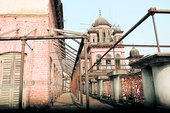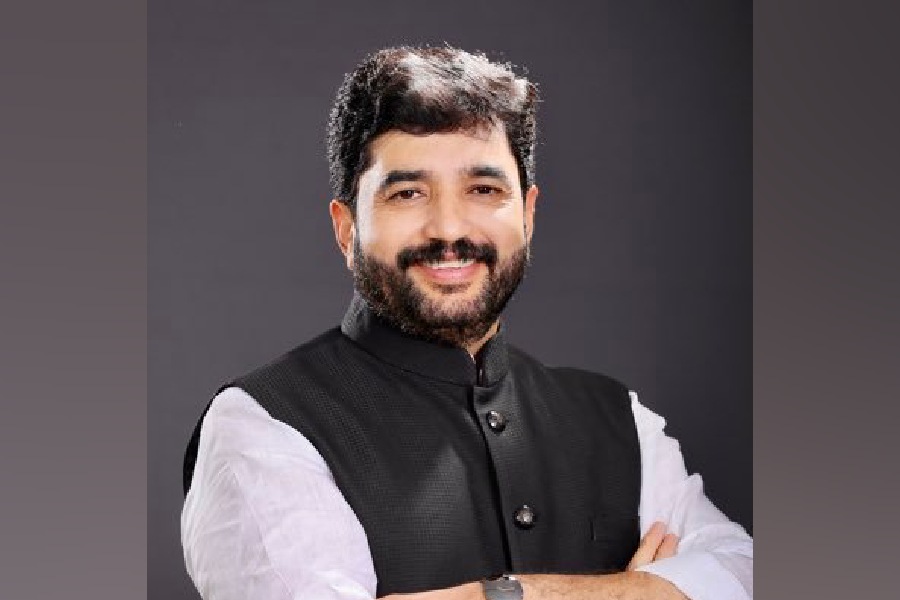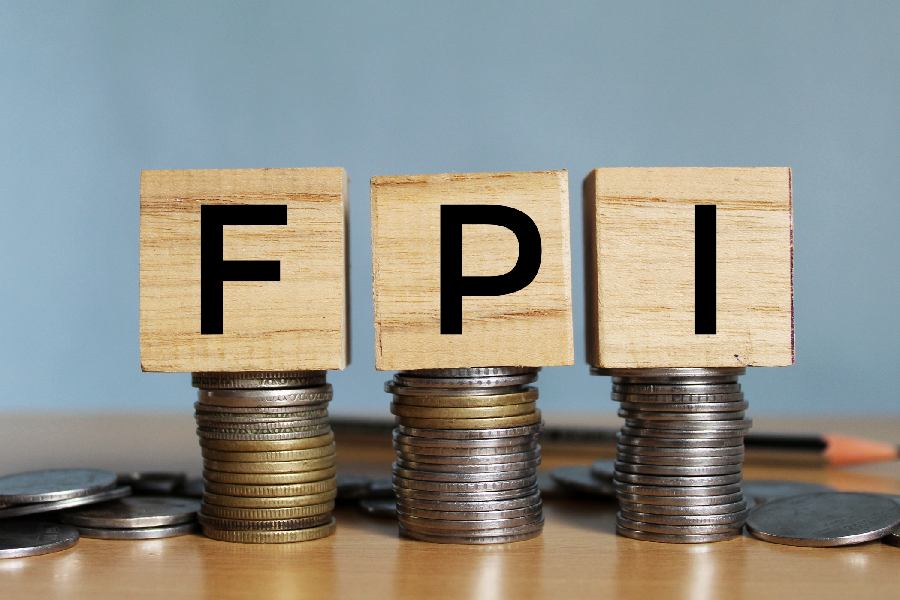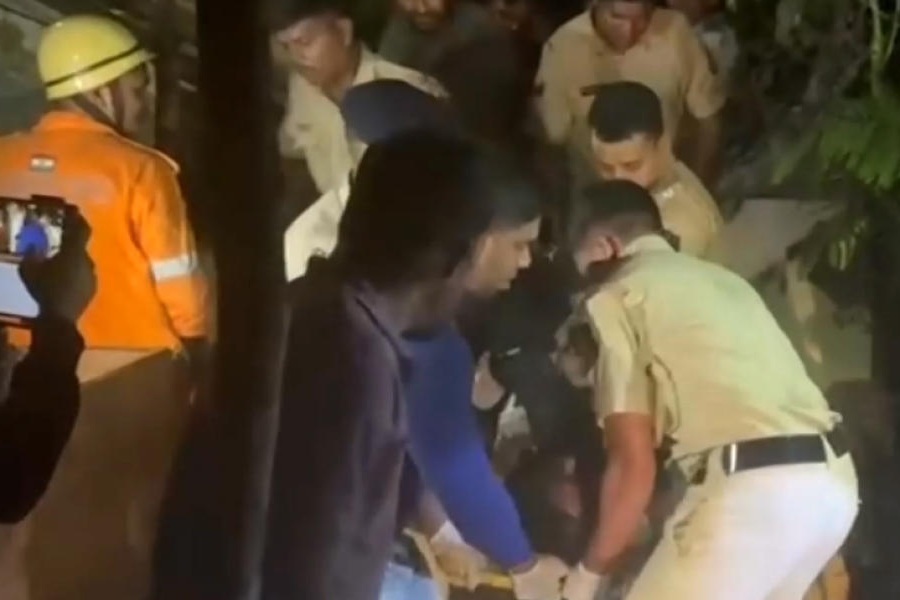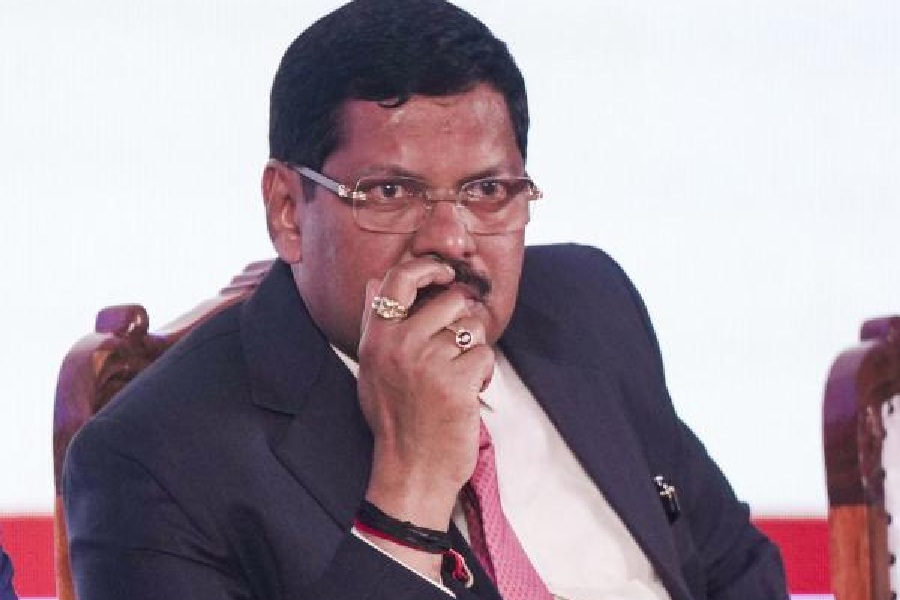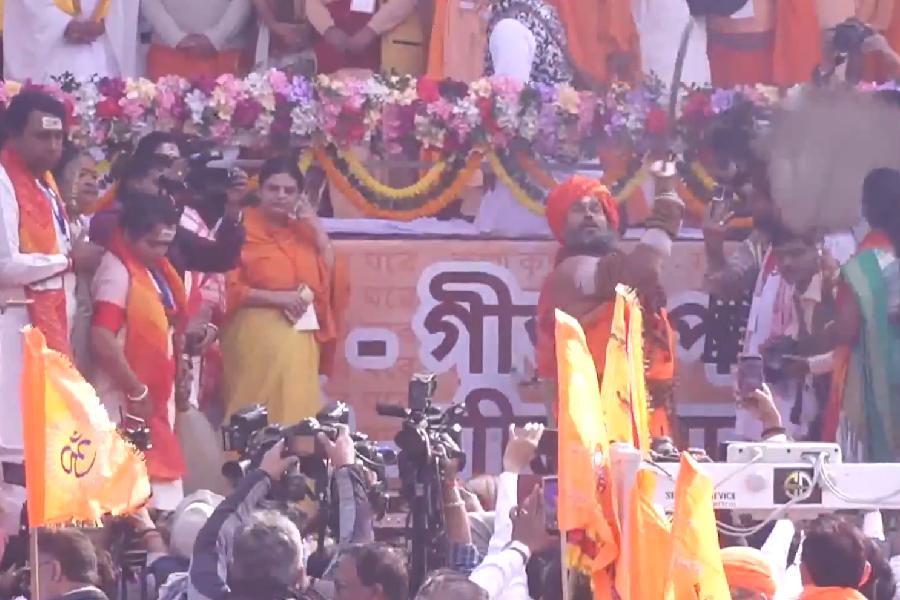 |
| Bamandas’s Kali temple. Picture by Sanat Kumar Sinha |
The city of Calcutta is a little over 300 years old, yet when one passes down the oldest quarters such as Chitpore or Cossipore one feels that it is slowly disintegrating into dust.
This part of the city has been spared the rabidity of developers but only the other day I noticed that there was a vacuum instead of the splendid double-storeyed building that stood near the Chitpore tram terminus close to the Cossipore lockgate. It incorporated architectural features from Buddhist stupas and caves, a style quite popular in early 20th century.
Most of the miserable buildings along Cossipore Road, save the gun and shell factory, are either laden with dust or have lost their protective plaster — a feature it has in common with other Calcutta thoroughfares. But even a casual look will not fail to size up the grand scale at which many of these were constructed. A significant example of such a building is the Kali temple with nine spires or “jewels” (nabaratna) forming a tower constructed in 1904 by Bamandas Mukherjee at 85 Cossipore Road, close to Udyanbati.
Before the temple is what was once the gateway to Bamandas’s property. An arch made of brick and plaster, it has a lion on top, a close copy of the one on Raj Bhavan. Only parasitical plants have got the better of this gateway.
The temple doubles as the residence of Bamandas’s descendants, as was intended. It has a central courtyard and the shrine is on its northern side. Facing the road is a cast-iron balcony on the first floor, and at its northern end is an octagonal tower-like structure.
The first-floor balcony is held up by cast iron columns from Birmingham, a common feature of buildings of those time. Bamandas was, of course, a wealthy man who had made his millions in the coal industry and was known as King of Black Diamond.
Bamandas was a descendant of the poet Sri Harsha of Kanauj and he was born in Fulia in Nadia. His great grandfather Ramprasad Mukhopadhyay settled in Hooghly. Bamandas’s father died when he was seven. So he, along with his mother, sought refuge at the home of his uncle. But they could not get along, and after seven years both mother and son began to live with the famous Daw family of Jorasanko.
A widowed daughter of the family adopted Bamandas, who opted for business instead of scholarly pursuits, close as he was to the Daws with their strong mercantile interests.
After trying out several enterprises he made just enough to buy three cottahs at 97 Baranasi Ghosh Street near Girish Park and built a house there. Maharani Swarnamayee of Cossimbazar granted him a piece of land in Sitarampur at low rent.
The land yielded superior quality coal and he also started a brick kiln, amassing a huge fortune. He was considered one of the worthies of Calcutta around 1889. Once he had reached the pinnacle of fame he felt disinclined to make money any longer and took upon himself the task of renovating the natmandir of the Kalighat temple.
Thereafter, he looked around for a suitable plot where he could build a Kali temple and his residence as well. When I visited the temple, Ashim Mukherjee, Bamandas’s great grandson, produced a photocopy of the document, according to which, he bought the garden house of a British attorney named John Hurt, who had died childless. Bamandas installed the image of Kripamayee Kali in the temple constructed on two bighas.
The Mukherjee family has of late tried to renovate the structure but the Calcutta Municipal Corporation (CMC) stopped work as shops with rolling shutters were being built on the ground floor and a conservation architect had not been hired to oversee the work.
The Mukherjee family has pleaded helplessness as this is beyond their means. The CMC is willing to pay for the cost of a conservation architect drawing the plan, which will be paid from the corpus fund. The family trust that looks after the building is yet to receive the CMC letter.

